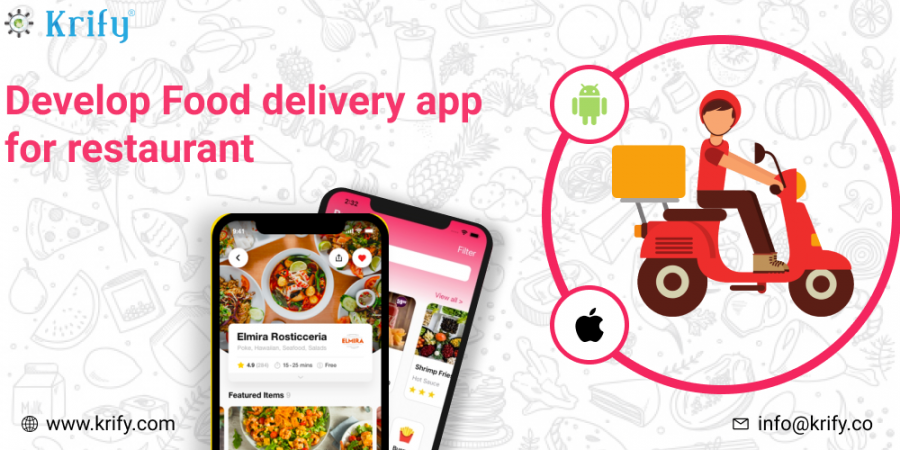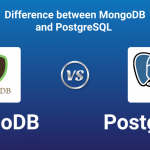Develop Food Delivery App(both in Android & iOS) for Restaurant
Mobile apps have produced a blazing increase in the delivery of online food. The two things we all want – Food, Comfort – are well-known for combining leading on-demand apps, like UberEats, Deliveroo, GrubHub, Doordash, and Postmaties. By making the entire order process a cake, these smartphone apps for the delivery of meals have become an enormous hit among all demographic customers.
From the owners of restaurants who create their food applications for services like UberEats and GrubHub, which operate as a collaboration platform between customers and restaurants, everyone seems to join the car. Their quick pleasure in the food delivery android app development and food delivery iOS app development has brought them into a business idea that has been destined to be successful. So, if your food supply app is to be built, now is the time!
Types of Food Delivery apps
You need to grasp the basic food delivery start-up models that dominate the market now if you want to launch your food delivery app.
Food delivery aggregator apps:
These are mainly second-platform applications that are used as a connection between customers and restaurants. These apps accept customer meal orders and forward them to the restaurant. However, they are not responsible for delivering the order to the consumers, which is the restaurant’s responsibility. Because of logistics support, such applications are only suitable for large restaurants with their supply networks.
Logistics support applications:
This model also offers delivery services in addition to the prior characteristics. It involves third-party delivery people who collect and deliver food at the customer’s door from their respective restaurants. These food supply applications are better for the market as they are also suitable for small-scale restaurants with no own supply services. Therefore, aggregator applications are no longer a viable business. Therefore, you must concentrate on this model if you want to develop a popular meal delivery software.
Dedicated Restaurant App:
This kind of food supply app is an extension to your business in restaurants. It is suitable for established restaurants with an existing supply infrastructure. These restaurant owners can easily order their favorite foods with the launch of their dedicated meal delivery app. At the same time, they can access a broader client base. This category includes apps like Dominos and Pizza Hut.
Food delivery app features
Upon deciding on the features of the food supply app, you determine the next step. Every basic element should be available through the Customer App, Restaurant App, and the Driver App.
Customer App
- Sign-up page: For client loyalty, it is necessary to have a straightforward, efficient, and attractive registration page. Your registration page should allow the user to establish new accounts by login/password or register for additional convenience using a third-party service, such as Facebook or Google.
- Profile page: They should access their profile after a consumer creates a new account in an online buying system. The opportunity to save favorite food/menu items can be part of this profile.
- Search Restaurant: The restaurant search tool shows the customers of the restaurants can order from using the app in either list or map format. Details about the location of each restaurant, menu items, prices, special offers, offers, and user ratings and comments should also be readily available.
- Order placement: As soon as a customer has compared and chosen eateries, they should be able to place their order fast and conveniently via the online ordering system; whenever necessary, the customer should be able to add or remove products from the orders and provide an order summary before payment is completed so that adjustments are made at the last minute.
- Payment processing: Ideally, an online ordering software can pay for an order. Processing payments must be quick and safe, and numerous payment choices should be made possible via your app.
- Notifications or real-time tracking: It is a great addition to keeping clients updated on the order’s status via notifications or real-time tracker.
- Social media integrations: Allowing customers to connect to their social media accounts to share food images is an easy approach to enhance loyalty and increase restaurant and app promotion.
- Loyalty or Rewards program: Providing users with awards via the app or a certain restaurant is another wonderful approach to increase loyalty. For instance, they are offering free delivery on every 5th order encourages customers to return from the same location to your app or order. Additional discounts, subscription choices, and referral programs might entice consumers to continue to use your application. You may even encourage users to join their friends by awarding them as brand ambassadors for their devotion.
Restaurant app:
- Registration page: This page should enable restaurants to create accounts, including company information such as name, address, working hours, etc.
- Content management: Offer a simple interface that enables restaurants to manage their menus, including pictures, prices, food intolerance ingredients, special offers, and other vital information about their offering. This page should be easy to change so that you may update restaurants’ information when necessary.
- Order management: Staff at the restaurant should be allowed to view incoming orders and adjust order conditions. It is crucial to track where orders are being prepared. Updates to real-time orders canceled. Also, an important aspect of this feature is completed orders and delivery orders.
- Communication capabilities for cross-interface: It is required both for aggregators and new types of delivery applications to update the delivery and delivery person and the consumer with the order status. Interface communication means that the client or delivery is notified that an order is ready for collection or on the way.
Driver App
- Sign-up page: Provide how a simple login/password or another kind of authentication can be used to register for an account.
- Order management: List available orders and details of each order in addition to collection and delivery locations to be displayed. The tracking of orders in real-time is also crucial. Conditions can be notified immediately through push notifications or similar services. Delivery drivers should sort the order, filter the details and schedule the delivery they want to fulfill simply. For other drivers to learn that an order has already been claimed, this booking functionality should update in the application in real-time.
- Account history: The ability to examine completed supplies and provide customer/restaurant notifications could help drivers make deliveries tough to mark for future reference.
- Loyalty or rewards program: The loyalty of delivery partners could be increased, including an incentive or a referral program. Offering drivers bonuses is a great strategy to assure loyalty to the brand while growing their brand expose or paying them for bringing their friends into order through the app.
Conclusion:
If you plan to build a food delivery app, take every component into account and identify account customers’ needs. . The market needs to be studied carefully. Detailed research into the field and industry needs to be carried out. This research helps you to design a prosperous app in the greatest possible way.
At Krify, we have a team of professional developers who are well versed in developing robust mobile and web applications for various business domains. Food delivery app development services are one. If you are looking for a food delivery app development company, you are on the right page. For more information, contact us.



